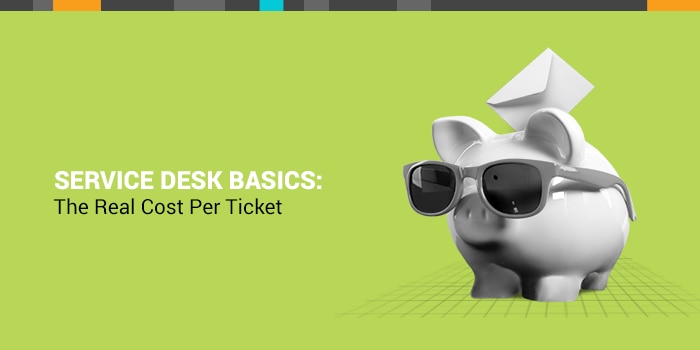The IT service desk is the hub that supports all business-related technology that helps businesses generate profits – but the service desk
itself doesn’t turn a profit for its work. One way to minimize costs, and to help service desks function more efficiently, is to track a metric called
cost per ticket. It’s found by dividing service desk operating expenses by total ticket volume during a given time period.
The biggest portion of service desk costs involves paying agents, their supervisors and support team members. Other expenses include license fees for service desk software and costs related to equipment that supports the service desk. There are two obvious ways to improve cost per ticket: spend less or handle more tickets. Of course, either can improve your metric, but you could end up paying a high price for stretching your team too thin. It's important to remember the original goal -- to support the business -- as you evaluate the cost per ticket at the service desk.
Paying Less
Service desk payroll varies widely over different geographic areas. You can cut your agents’ pay and benefits to the bone, but doing so makes it difficult to attract and keep good people. According to Karlyn Borysenko of
Zen Workplace, it costs between 30 and 50 percent of an employee’s annual wages to replace them. When you replace Level 2 and 3 engineers, the cost is an average of 150 percent of their annual wages.
You can also try cutting costs by choosing the cheapest available hardware and software. When these tools don’t function the way they should, however, the agents you have can’t process as many tickets. In addition to driving up your cost per ticket, this inefficiency can drive down your customer satisfaction score. You may have lower cost per ticket, but if your users aren’t benefiting, your service desk isn’t generating value for your business.
One way to cut costs is to consolidate platforms as much as possible. If different departments are using different tools and software subscriptions to communicate or provide services, it's worth looking for a platform that can address all of those needs, for all of the employees in the organization.
Boosting Ticket Volume
Another way to drive down cost per ticket is to increase completed ticket volume. There are both good and not-so-good ways to do this. Here are the good ways:
- Develop a great knowledge management center. With proven tips for first-time resolution at their fingertips, your agents can deliver a better experience in less time.
- Practice smart automation. Investing in automatic password reset or single sign-on takes a lot of low-level problem-solving away from your agents, giving them time to process tickets that actually require expertise. One great way to increase customer satisfaction via automation is to set up an automated callback queue.
- Prioritize your tickets. By tackling high-priority tasks first, you can lower your cost per incident and ensure minimal loss to business revenue and productivity. You can also perform better triage to match the right agent skill sets with the right support tickets.
- Evaluate your performance. Track service desk performance against your SLAs, and track additional performance metrics like first-time resolution rate. Go for quality service rather than setting arbitrary goal posts like average call handle time, which causes stress and sets up unnecessary power struggles.
Always remember that it’s critical to place cost per ticket in context. Earlier, we mentioned cost per incident, which includes both the cost of remediation following an incident and the opportunity cost of revenue lost because of the incident. If you’ve cut cost per ticket to the bone, but you’re experiencing many high-cost incidents, it’s time to worry less about being cheap at the service desk and more about investing in training, processes and better software to head problems off before they become serious.




